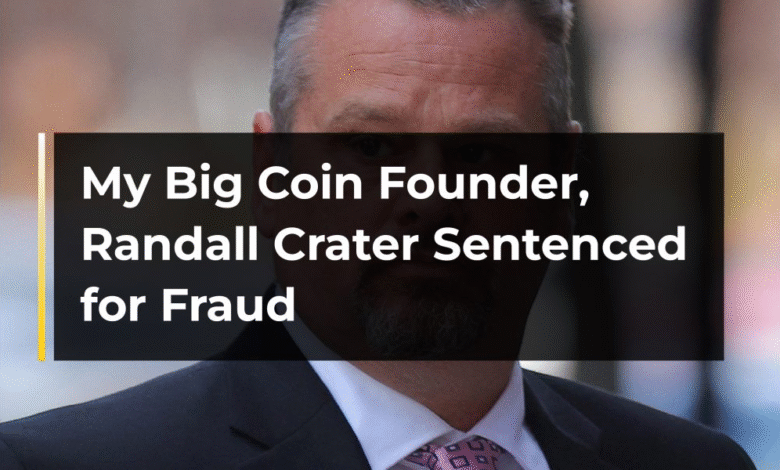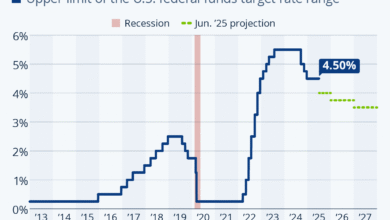My Big Coin Fraud: CFTC Seizes $25M in Crypto Penalties

The My Big Coin fraud scandal has unveiled a staggering $25 million in penalties and restitution following a landmark ruling by a federal court, shedding light on a fraudulent crypto project that misled investors with false claims of asset backing and market promise. The Commodity Futures Trading Commission (CFTC) revealed that individuals and companies behind the My Big Coin (MBC) scheme exploited the growing interest in digital currencies to perpetrate a deceitful digital asset scam. With the court finding that MBC was neither gold-backed nor viable, the consequences have been severe for the perpetrators, including significant cryptocurrency penalties. This ruling underscores the urgent need for vigilance in the rapidly evolving landscape of blockchain finance, where investors must be cautious of such frauds. As affected individuals look towards My Big Coin restitution, this case serves as a critical lesson in understanding the risks associated with unregulated crypto projects.
The recent judgment against My Big Coin highlights crucial issues within the cryptocurrency landscape, particularly following the Commodity Futures Trading Commission’s (CFTC) ruling regarding a notorious digital currency fraud scheme. This case not only involved sensational claims about a so-called legitimate currency but also showcased the darker side of investment in virtual assets, where scams can thrive in unregulated environments. As regulatory agencies work to address these deceptive practices, the My Big Coin scandal serves as a reminder of the importance of consumer protection and the need to establish clear guidelines for digital finance. Stakeholders must recognize that while many crypto projects hold genuine potential, the threat of fraud remains ever-present, necessitating a cautious approach to investment within this dynamic sector. Overall, the fallout from the My Big Coin case is a pivotal moment prompting ongoing discussions about enforcement, regulation, and the future of cryptocurrency.
Overview of the My Big Coin Fraud Scheme
The My Big Coin fraud scheme represents a significant case of cryptocurrency deception in the market. The Commodity Futures Trading Commission (CFTC) revealed that the scheme misled investors by promising a gold-backed digital asset that offered unrealistic returns. This fraudulent project, which operated between 2014 and 2017, lured investors using false claims of credibility and market viability, resulting in millions of dollars in losses.
As the CFTC discovered, the lack of legitimate backing for My Big Coin exposed a core problem in the rapidly evolving cryptocurrency landscape. Many investors were drawn to what appeared to be a secure investment rooted in valuable resources like gold. However, as the court proceedings illustrated, this digital asset was nothing more than an elaborate scam that left victims with significant financial damages. The case underscores the necessity for greater vigilance and regulatory oversight within the cryptocurrency space.
CFTC’s Historic Ruling on Cryptocurrency Regulations
The CFTC’s ruling against My Big Coin marks a historic moment for cryptocurrency regulations in the United States. This landmark federal court decision not only penalized the individuals involved but set a precedent for future enforcement actions within the Digital Asset sector. By imposing a hefty penalty totaling over $25 million, the court emphasized the serious consequences of crypto project fraud, which aims to deter similar scams that may arise in the marketplace.
Regulatory bodies are now more inclined to rigorously monitor cryptocurrency projects to ensure compliance with existing laws. As a result, the broader industry is likely to witness an increased push for transparency and accountability. This decisive action serves to remind developers and investors alike that engaging in fraudulent practices within the cryptocurrency realm will lead to severe repercussions and that adherence to ethical standards is pivotal for the sector’s overall health.
Understanding Cryptocurrency Penalties and Restitution
In the wake of the My Big Coin judgment, understanding the implications of cryptocurrency penalties and restitution is critical for investors and stakeholders. The court mandated restitution for victims, highlighting the severe financial repercussions faced by those who were misled by false advertising of the digital asset. The decision to impose a civil monetary penalty of over $19 million serves as a clear message against fraudulent conduct in the cryptocurrency space.
Victims of the My Big Coin case are now left unsure about the recovery of their investments, as the CFTC has raised concerns about the defendants’ ability to return the lost funds. This situation emphasizes the importance of conducting thorough due diligence before investing in any cryptocurrency project. Investors must be aware of the risks associated with digital asset investments, particularly in cases involving claims that may lack legitimate backing or regulatory oversight.
The Role of the CFTC in Crypto Enforcement
The Commodity Futures Trading Commission plays a crucial role in overseeing and enforcing regulations within the cryptocurrency landscape. Its recent actions against My Big Coin highlight the agency’s commitment to combating digital asset scams and protecting investors from fraudulent schemes. As the regulatory body responsible for the enforcement of anti-fraud laws in commodities and futures trading, the CFTC is becoming increasingly involved in the oversight of cryptocurrencies.
Through targeted enforcement actions, the CFTC aims to promote a safer, more transparent market for cryptocurrency investors. The agency’s escalating involvement signifies a shift toward more stringent regulatory practices, which is essential given the rapid growth of blockchain technologies. Ultimately, these enforcement measures are designed not only to penalize fraudsters but also to restore trust in the integrity of digital asset markets.
Consequences of the My Big Coin Fraud for Investors
Investors involved in the My Big Coin fraud scheme now face significant financial challenges, as the ramifications of the verdict begin to unfold. The stark reality is that many victims may never recoup their lost investments due to the defendants’ lack of resources. This unfortunate outcome exemplifies the dangers posed by unregulated cryptocurrency projects that promise extraordinary returns without substantial backing.
The consequences extend beyond individual losses; they also contribute to a pervasive skepticism towards the cryptocurrency market as a whole. As cases like My Big Coin come to light, potential investors may approach future digital asset opportunities with increased caution. This mistrust could hinder the growth of legitimate blockchain projects, making it imperative for the industry to push for clearer regulations and better investor education on how to identify and avoid scams.
The Future of Cryptocurrency Regulations Post-My Big Coin
The aftermath of the My Big Coin ruling prompts critical discussions about the future of cryptocurrency regulations. As fraudulent schemes continue to emerge, regulatory authorities must adapt their strategies to provide better protection for investors. This may involve updating existing laws to better address the complexities of digital assets, ensuring that consumers are equipped with the knowledge needed to navigate this ever-evolving landscape.
Furthermore, as regulatory frameworks become more established, the cryptocurrency industry stands to benefit from increased legitimacy and investor confidence. Collaborative efforts among regulators, industry participants, and policymakers will be essential in creating a balanced approach that allows for innovation while safeguarding the interests of investors. The lessons learned from the My Big Coin case should serve as a catalyst for constructive dialogue on sustainable practices within the digital asset ecosystem.
Investor Vigilance Against Digital Asset Scams
The fallout from the My Big Coin fraud scheme illustrates the crucial need for investor vigilance in the cryptocurrency space. As digital assets continue to gain traction, the potential for scams and fraudulent schemes remains high. Investors must develop a keen understanding of how to recognize red flags and protect themselves from scams that promise unrealistic returns or lack transparency.
One effective strategy for investors is to conduct thorough research on any cryptocurrency project before committing funds. This includes scrutinizing whitepapers, assessing the credibility of the team behind the project, and evaluating market viability. By taking proactive steps to inform themselves, investors can mitigate risks and avoid falling victim to digital asset scams, ultimately fostering a more secure investment environment.
Legal Implications of Fraud in Cryptocurrency Projects
The legal implications of fraud in cryptocurrency projects are exemplified by the extensive penalties imposed in the My Big Coin case. As the CFTC actively pursues individuals and companies for misleading practices, the legal landscape surrounding digital asset investments is becoming increasingly stringent. Such cases emphasize that fraudulent activities will not be tolerated and that perpetrators will face prosecution and financial liability.
Moreover, with regulations evolving, stakeholders should prepare for a future where legal accountability is more rigorously enforced. This shift signals to both investors and developers that adherence to ethical standards in cryptocurrency projects is essential. Transparency and accountability will be critical in maintaining investor trust and fostering long-term growth within the digital asset ecosystem.
The Importance of Regulatory Clarity in Cryptocurrency
Regulatory clarity is vital for the continued growth and legitimacy of cryptocurrencies, as evidenced by the mixed responses to the My Big Coin ruling. Advocates within the digital asset industry argue for clearer guidelines that distinguish between fraudulent schemes and legitimate ventures. As disputes over regulation persist, the lack of clarity can stifle innovation and deter potential investors who fear legal repercussions.
Establishing a well-defined regulatory framework could not only protect investors from scams but also foster an environment conducive to healthy competition and innovation. By working closely with industry participants, regulators can create policies that support responsible growth in the digital asset market. As the landscape matures, achieving regulatory clarity will be essential in ensuring that cryptocurrencies can achieve their full potential while safeguarding consumer interests.
Frequently Asked Questions
What is the My Big Coin fraud case about?
The My Big Coin fraud case involves a deceptive digital asset scheme leading to a $25 million penalty and restitution ruling by the CFTC. The case centers around the promotion of My Big Coin (MBC) as a gold-backed cryptocurrency with false claims about its legitimacy and market viability, resulting in significant financial losses for investors.
What penalties were imposed in the CFTC My Big Coin ruling?
The CFTC My Big Coin ruling imposed a civil monetary penalty of $19,326,324 along with $6,442,108 in restitution. This landmark judgment targets the individuals and businesses involved in the fraud, highlighting the severe consequences of engaging in a digital asset scam.
How did My Big Coin defraud investors?
My Big Coin defrauded investors by making misleading claims about the cryptocurrency being a legitimate, gold-backed digital asset. From 2014 to 2017, the scammers collected over $6 million from at least 28 individuals, exploiting false assurances of MBC’s market presence and reliability.
What are the implications of cryptocurrency penalties in cases like My Big Coin?
Cryptocurrency penalties in cases like My Big Coin underscore the importance of regulatory enforcement in the digital asset space. The hefty fines serve as a warning to potential fraudsters, while also trying to protect investors from scams. Regulatory actions like this aim to foster a legitimate and trustworthy blockchain-based finance environment.
What restitution can victims expect from My Big Coin fraud?
Victims of the My Big Coin fraud can expect a court-ordered restitution of $6,442,108. However, recovery of these funds remains uncertain as the CFTC has indicated that the defendants might lack sufficient resources to repay the defrauded investors.
Who were the key individuals involved in the My Big Coin fraud scheme?
The My Big Coin fraud scheme involved key figures including Mark Gillespie and John Roche, as well as the companies My Big Coin Pay Inc. and My Big Coin Inc. Notably, co-conspirator Randall Crater was convicted and sentenced to prison for his role in the scam.
What can investors learn from the My Big Coin digital asset scam?
Investors can learn the importance of conducting thorough research and due diligence before investing in cryptocurrencies. The My Big Coin digital asset scam illustrates the need for skepticism towards investment opportunities that promise unrealistic returns or lack transparency about their backing and market activity.
| Aspect | Details |
|---|---|
| Total Penalties and Restitution | $25 million in penalties and restitution |
| Judgment Date | June 11, 2023 |
| Key Individuals | Mark Gillespie, John Roche, Randall Crater (convicted), My Big Coin Pay Inc., My Big Coin Inc. |
| Fraudulent Claims | My Big Coin (MBC) was falsely promoted as a gold-backed cryptocurrency |
| Duration of Fraudulent Activity | 2014 to 2017 |
| Victims | At least 28 individuals defrauded, with over $6 million collected from them |
| Court’s Concerns | Uncertain asset recovery; defendants may lack resources to repay victims |
| Industry Response | Advocates argue for clearer regulations to support blockchain finance industry |
Summary
My Big Coin fraud has surfaced as a significant issue in the cryptocurrency sector, with a recent federal court judgment highlighting the deceptive practices of its promoters. The case serves as a reminder of the potential dangers within the digital asset market, reinforcing the need for clear regulations to prevent fraudulent schemes that exploit unsuspecting investors.




